[ Interview ] Romain, sailing around the Mediterranean
With three buddies, Romain sailed around the Mediterranean after graduating. They chose an Océanis 390 which they refitted themselves. He tells us about the work they did, the problems they encountered and how they divided up the tasks. An uncompromising look at what worked and what didn’t, and how to better maintain your boat.
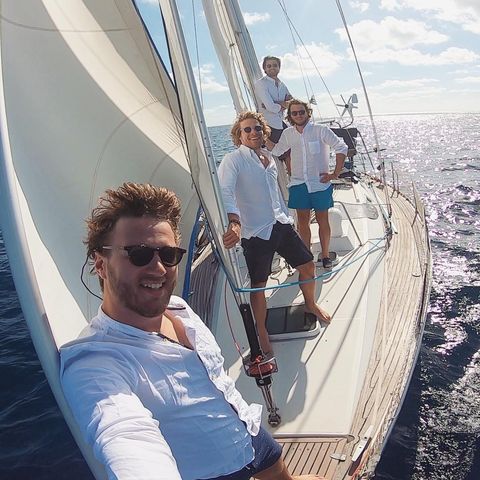
Ready4Sea: Romain, you sailed around the Mediterranean for almost a year after you graduated. Can you tell us more about this project?
Romain Valverde: In a nutshell, it’s 4 friends, sailing in the Mediterranean for a year.
The idea was in the back of our minds when we were finishing our studies. It was in July that we decided on the Mediterranean. Our crew was a mixed bag, with two of us having significant experience on a sailboat, but also two who were complete newbies. We haven’t all been on board all the time: we’ve had to deal with our end-of-study obligations and the start of our professional lives.
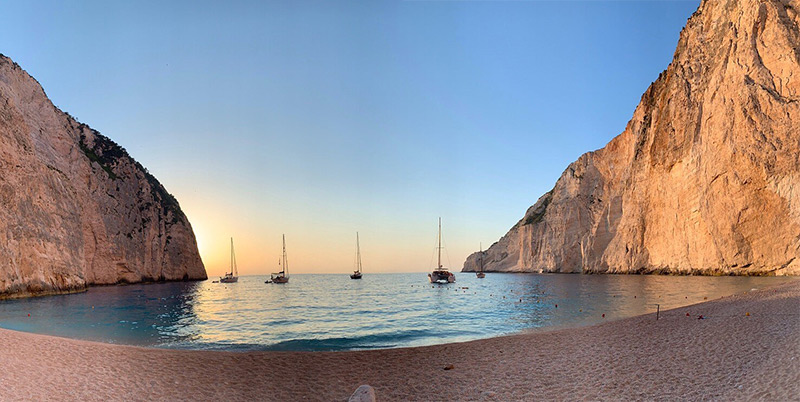
R4S: Your boat was called Pacha Mama, can you tell us about her and how you found and bought her?
RV: We were looking for a seaworthy boat between 35 and 40 feet long. Quite quickly we identified the Oceanis 390 as a serious candidate, with its 11.50m length and open transom.
One of them was for sale in Port-Saint-Louis-du-Rhône at a price that was a little high given its condition. It had suffered slightly during a grounding, and the expert had detected a non-structural problem with the keel joint. This enabled us to negotiate the price significantly. In the end, we bought her in early September for 13% less than the original asking price.
Pacha Mama, as we renamed her, was well equipped: solar panels, a watermaker, a staysail, spare sails and a spinnaker that was a little fragile, plus a few other practical and safety items. The original engine worked well.
R4S: What kind of work did you need to do before you left and when you got back?
RV: There weren’t too many things to refit, starting with the antifouling of course. But we also changed the batteries and the windlass circuit breaker for maximum reliability. Finally, we also added a wind generator. We carried out these projects at weekends over the two months following the purchase and before setting sail.
When we returned in August, we carried out a month of maintenance and renovation work before putting the boat up for sale. Obviously, we applied a new coat of antifouling. But we also replaced a number of ropes that we hadn’t yet changed (for a cleaner look), reinstalled nets in the lifelines, and redid the few chips of gel-coat that the boat had suffered. As for the sails, the spinnaker had been repaired three times, and the UV band on the genoa changed. But above all, our big final job was to refurbish the teak deck. We did it ourselves, and it took us a good 15 days of work and a lot of elbow grease.
All this enabled us to sell the boat for around 20% more. This added value reflected three things: the cost of recently added or replaced equipment, the time spent, and the seriousness of the maintenance we’d carried out. And our months of sailing only confirmed and validated the boat’s good condition and capabilities.
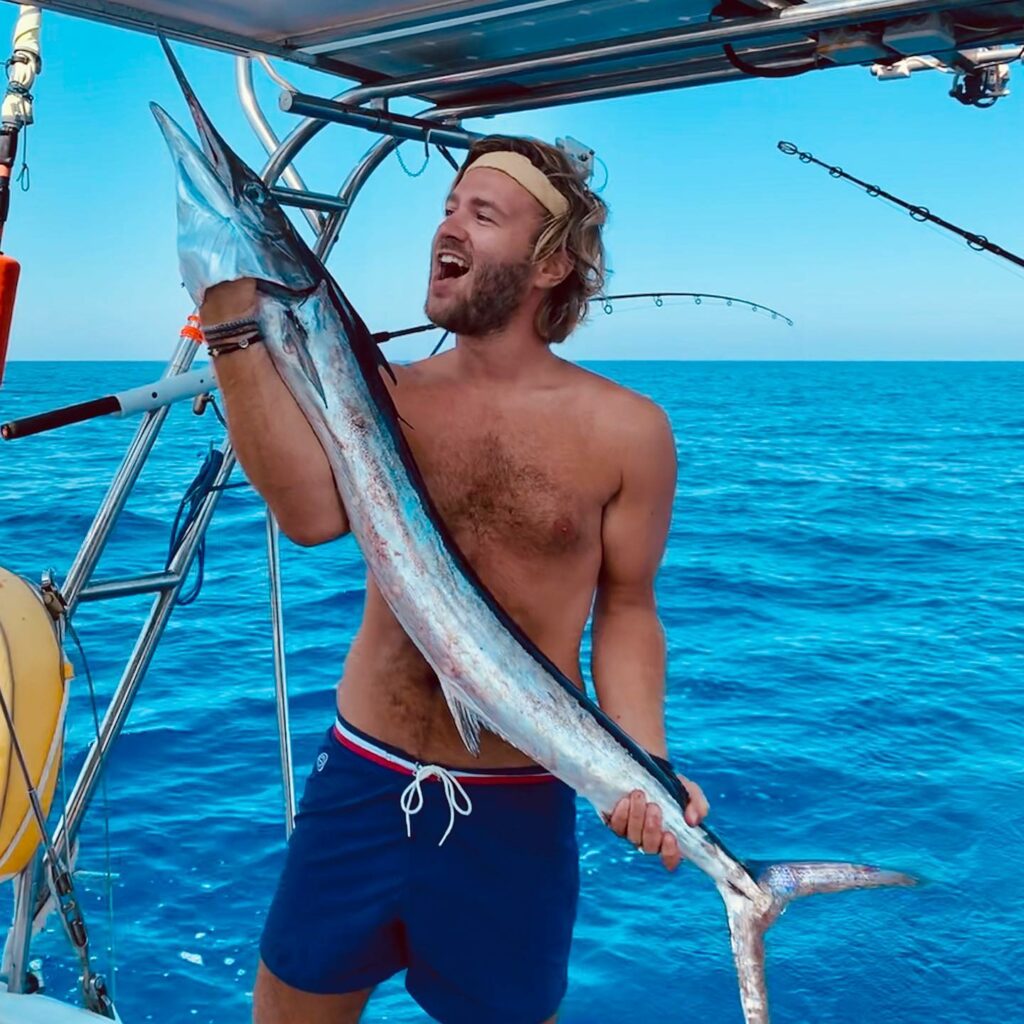
R4S: Which skills did you already have? In which fields did you need training and then how?
RV: One of those who didn’t know anything about sailing before leaving was, on the other hand, well versed in powerboats and electricity. In particular, he had worked on Yamaha and Mercury engines in Cannes, and was very familiar with the maintenance requirements of an engine. So it was a natural decision for him to take care of all the mechanical and electrical aspects.
Changing an oil filter or an impeller was a basic requirement, and so much the better, because we had to service the heat exchanger. We had problems with the cooling circuit. After changing the impeller several times, it turned out that the seawater filter was no longer working properly. It was letting in jellyfish, which were being sucked right into the exchanger! Cleaning it wasn’t easy, as it was clogged with stinging elements…
R4S: And for the rest, how did you organise the maintenance of the boat during your trip? Was it the role of anyone in particular and what tools did you use?
RV: As far as the hull was concerned, it was relatively easy and frequent. We inspected it on every dive, and it was probably the part of the boat that got the most care.
As for the sails and fittings, it was up to us, the two sailors, to take care of them. Checking the stitching and points of wear, cleaning the winches, etc.: everything went through at some point. Everything was done at one time or another. But because we didn’t have any planning tool, we just went with our gut feeling. And I have to admit that we often became aware of a problem too late, just as it was happening, or when the parts had become too damaged. In the end, issues were dealt with rather than anticipated.
To regain control, we started to take advantage of stormy weather, when we were stuck in port, to carry out checks beforehand. But in retrospect, we lacked a real organisational tool.
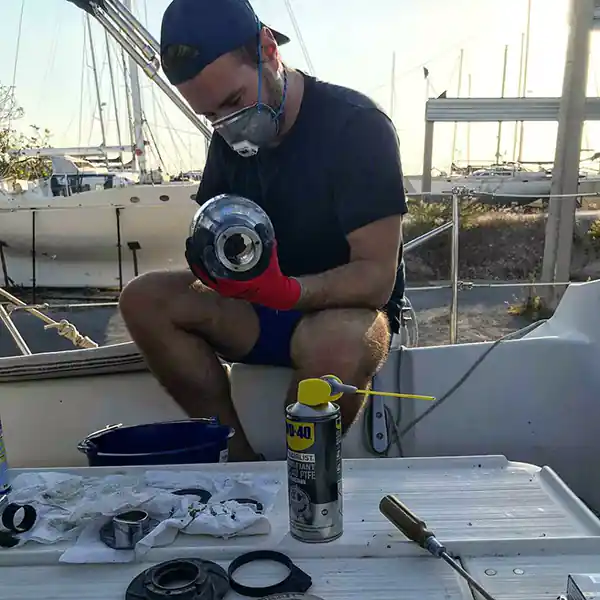
R4S: What challenges have you faced in terms of maintenance? Did anything go wrong? And how did you overcome them? Perhaps one or two specific stories to tell?
RV: One of the lingering woes after our initial refit was a leak in one of the portlights. The fact that it was no longer completely watertight made the trip a bit wet. We had spare plexis on board, just in case, but we never got around to installing them. In the end, we resold them with the boat so that subsequent owners could fit them when the time came.
We can also think of the engine cooling problems I’ve just mentioned. We’re probably partly to blame, because if we’d changed the water intake filter, we could have saved ourselves a lot of trouble and a lot of trial and error trying to work out where the flow was being reduced from.
I’m going to make a comparison with boat hire, because it’s a sphere I’m very familiar with. I’ve organised cruises for students and I’ve regularly taken delivery of a boat, or even a fleet of ten boats, only to return them 8 or 15 days later. During our trip, we didn’t have any problems with the small regular maintenance work we do every day. It’s more on the more important and less frequent maintenance that I have some anecdotes to tell. In 80% of cases, we did what was necessary. But that’s also where we made a few mistakes. At the end of the day, these are things that a charter company does at the beginning or end of the season because it’s essential for the boat to run smoothly. And that’s where we perhaps lacked a bit of know-how and preparation.
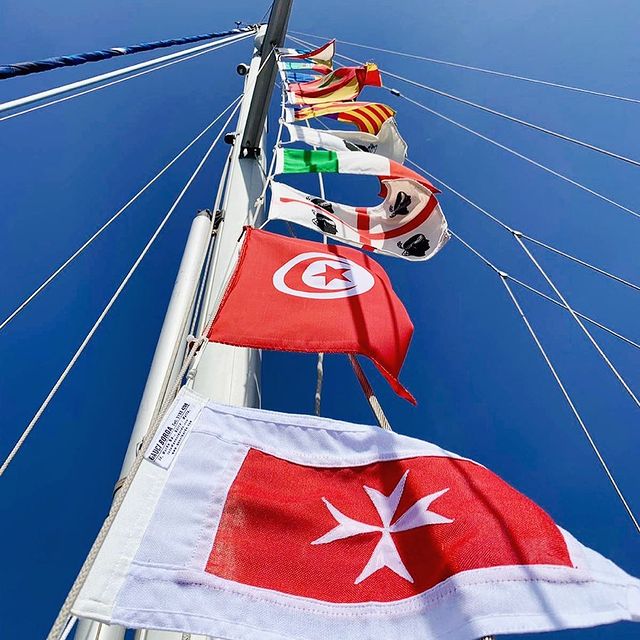
R4S: What do you think of the idea of providing an app to help boaters keep up with the condition of their boat?
RV: I see three major advantages.
Firstly, to train and inform boaters – and beginners in particular – so that they can take their maintenance skills to the next level. Having access to a knowledge base and a calendar that allows you to find everything is a real plus in my opinion. I can think of things that are specific to my boat as well as tasks that are generic to all boats. There are a lot of aspects that you don’t know when you get on a boat of a slightly different type: for example, when you move from a monohull to a catamaran, or from a powerboat to a RIB.
The fact that a well-maintained boat can increase in value has already been mentioned. And despite the occasional slip-up that I’ve shared with you in all transparency, we’ve nevertheless maintained our boat well. That’s why we didn’t lose any money on this trip. Reselling your boat for 20% more thanks to maintenance is possible, the proof is in the pudding!
Finally, as I said earlier, I’ve worked with quite a few charter companies and fleet managers in recent years. And I can see that it would be very useful for them to be able to monitor the boats and report any problems as they arise. If they can avoid discovering on Saturday, when the boat is returned, that there is a torn lazy-bag or a bent rudder stock, for example, that will make their job a lot easier. It will also make their financial tracking easier and more accurate, which is even more important than for a private individual.
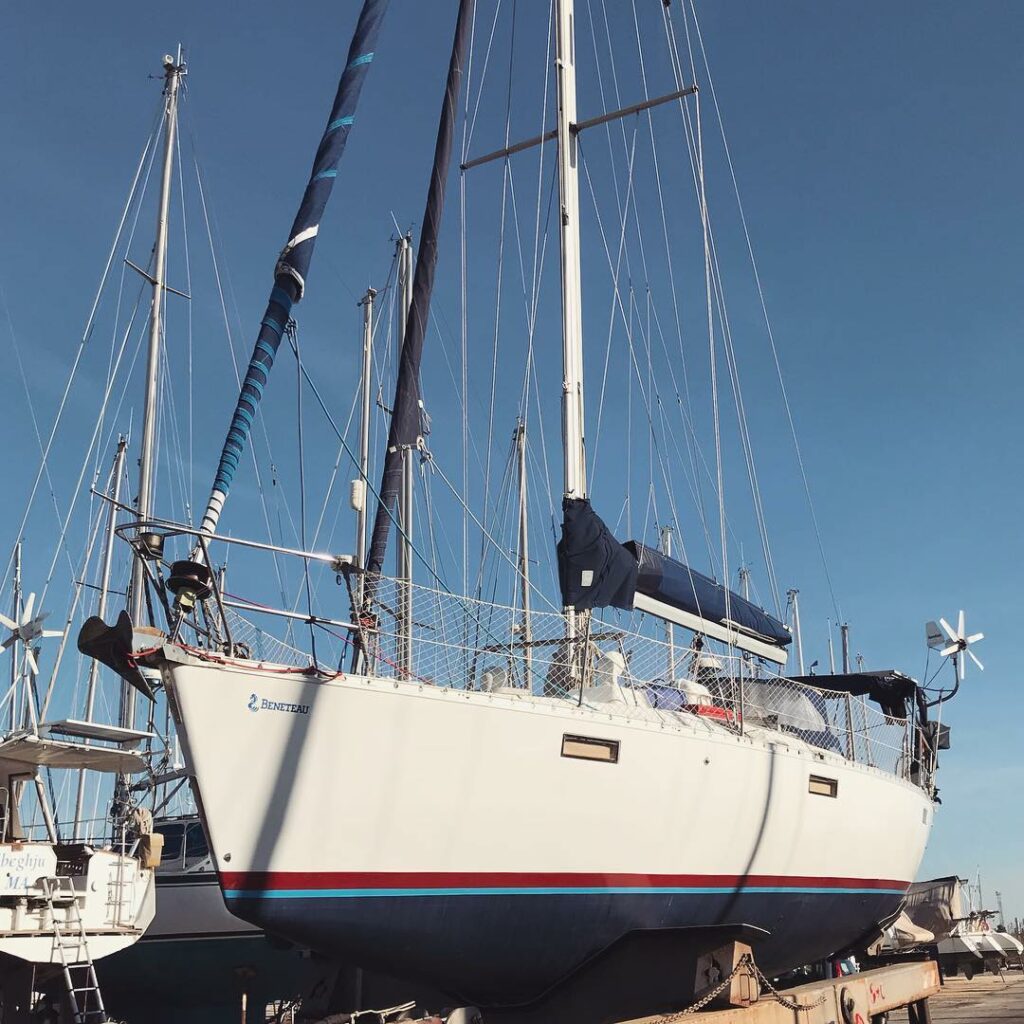
R4S: And finally, would you have any advice to share with others who are thinking of doing what you’ve done?
RV: My main piece of advice would be not to underestimate the choice of the boat, as this has a huge impact on the whole voyage. If you don’t know anything about boats, you should really go for one that’s in impeccable condition. Obviously, this will be easier later on with the app, when the sellers can prove that they have a properly followed maintenance plan.
And a word of advice about the sailing area: transatlantic sailing and the Caribbean are very fashionable for a sabbatical year, but the Mediterranean is good too. I don’t know why it seems less exotic, but it makes for a very rich and colourful trip, and it was magnificent.
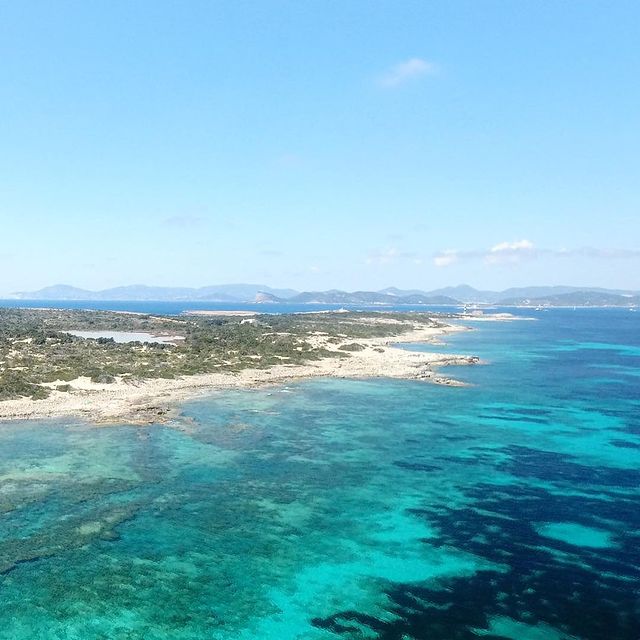
Relive their trip through their Instagram pictures on @marenostrumsailing.
Subscribe to our monthly newsletter here:
